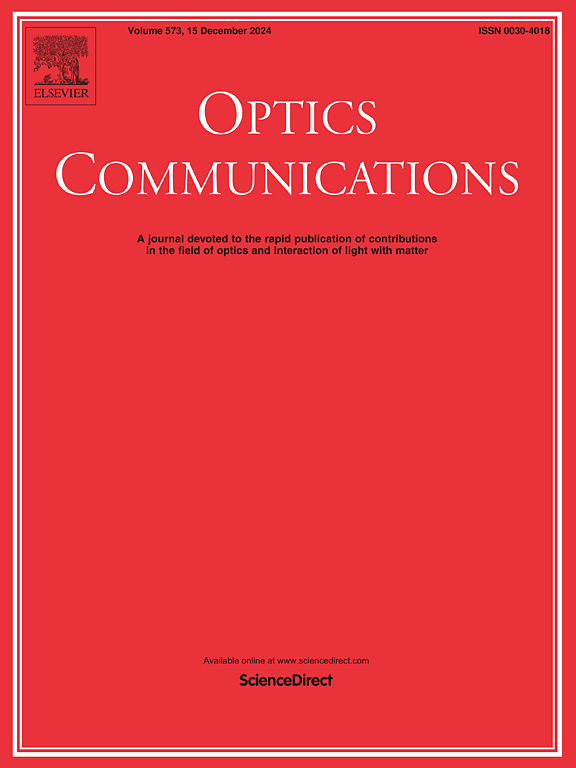Polarization independent metal–insulator–metal layered wide-band absorber with large angular stability for radar cross section reduction application
IF 2.2
3区 物理与天体物理
Q2 OPTICS
引用次数: 0
Abstract
A wide-band polarization independent microwave absorber has been proposed using two cross dipole resonators and square nodes with an unit cell size of , where represents the wavelength at the lowest operating frequency. The cross-dipole based resonating patterns with four nodes are designed on the FR4 dielectric layer. Lumped resistors are employed on the top layer to achieve the wide bandwidth. The bottom-most layer of the proposed absorber structure is made of copper. An air-spacer layer has been deployed between the substrate and the metallic ground layer to extend the low frequency absorption. The fractional bandwidth of the absorber is 93% with the absorption greater than 90% in the operating frequency range of 2.76 GHz-7.56 GHz. The profile of the proposed absorber is 0.08. The unique characteristic of the proposed absorber structure is that the polarization conversion ratio of the structure is less than 0.1. The absorptivity of the proposed structure is more than 80% for a wide range of incident angles up to 60°. The absorption characteristics are found to be stable for both transverse electric and transverse magnetic polarized incident waves under normal incidence. Further, the mono-static radar cross section reduction of the proposed absorber structure has been verified to be greater than 20 in the operating bandwidth.

偏振无关金属-绝缘体-大角稳定金属层状宽频带吸收器,用于雷达横截面减小
提出了一种宽带极化无关微波吸收器,使用两个交叉偶极子谐振器和平方节点,单位胞尺寸为0.18λL×0.18λL,其中λL表示最低工作频率的波长。在FR4介电层上设计了基于交叉偶极子的四节点谐振模式。顶层采用集总电阻,实现了较宽的带宽。所提出的吸收器结构的最底层是由铜制成的。在基板和金属接地层之间部署了空气间隔层以延长低频吸收。在2.76 GHz ~ 7.56 GHz工作频率范围内,吸波器的分数带宽为93%,吸波率大于90%。所提出的吸收器的轮廓为0.08λL。该结构的独特之处在于其极化转换率小于0.1。所提出的结构的吸收率超过80%的大范围入射角高达60°。发现在正入射条件下,横向电极化入射波和横向磁极化入射波的吸收特性是稳定的。此外,所提出的吸收体结构的单静雷达横截面减少已被证实在工作带宽下大于20 dBm2。
本文章由计算机程序翻译,如有差异,请以英文原文为准。
求助全文
约1分钟内获得全文
求助全文
来源期刊

Optics Communications
物理-光学
CiteScore
5.10
自引率
8.30%
发文量
681
审稿时长
38 days
期刊介绍:
Optics Communications invites original and timely contributions containing new results in various fields of optics and photonics. The journal considers theoretical and experimental research in areas ranging from the fundamental properties of light to technological applications. Topics covered include classical and quantum optics, optical physics and light-matter interactions, lasers, imaging, guided-wave optics and optical information processing. Manuscripts should offer clear evidence of novelty and significance. Papers concentrating on mathematical and computational issues, with limited connection to optics, are not suitable for publication in the Journal. Similarly, small technical advances, or papers concerned only with engineering applications or issues of materials science fall outside the journal scope.
 求助内容:
求助内容: 应助结果提醒方式:
应助结果提醒方式:


